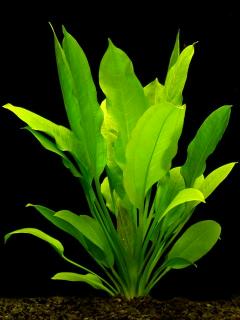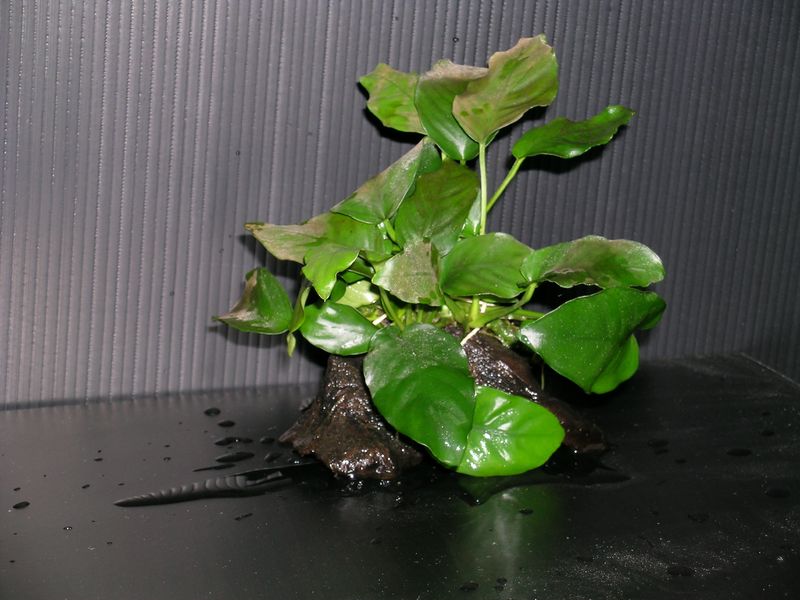 Live plants are to the freshwater aquarist what live corals are to the saltwater reef aquarist. They add a natural look to the tank, can benefit the water quality and other livestock and can be a challenge to maintain and “aqua-scape” into just the right look for the aquarium. Just as corals need to be placed in the right area of the aquarium and secured correctly so they can remain healthy and thriving, so also do plants need to be planted correctly and appropriately. Knowing how to best plant different types of live plants that you may have will help them thrive. Keep in mind however that these are general guidelines. Some plants prefer larger or smaller substrates or may have special considerations for their species.
Live plants are to the freshwater aquarist what live corals are to the saltwater reef aquarist. They add a natural look to the tank, can benefit the water quality and other livestock and can be a challenge to maintain and “aqua-scape” into just the right look for the aquarium. Just as corals need to be placed in the right area of the aquarium and secured correctly so they can remain healthy and thriving, so also do plants need to be planted correctly and appropriately. Knowing how to best plant different types of live plants that you may have will help them thrive. Keep in mind however that these are general guidelines. Some plants prefer larger or smaller substrates or may have special considerations for their species.
Bunched Plants
Bunched plants are popular and common. Though their appearance, care and requirements vary, “bunched plants” are all sold as bundled individual stem cuttings held together with a metal plant anchor or rubber band. These plants generally root within a week or two and the growing tips can be pruned and replanted to make new plants. Some bunched plants like hornwort an anacharis, can be left floating on the water’s surface. You can plant each stem of a bunch individually by inserting the end into the substrate, or keep them in their bunches for a bushier look. The plant anchors or rubber bands can be removed once the plant is rooted in place.
Rooted Plants (Echinodorus Swords, Cryptocoryne, Vallisneria, Sagittaria, etc.)
These are the most familiar types of plants. They grow with root structures similar to those found in our gardens on land and are planted in much the same way. The roots should be buried in the substrate up to the crown of the plant (where the root ends and the leaves begin). Avoid getting substrate between each stem of the plant. This can break up the crown and root structure and may damage at least some of the stems that are separated, if not the whole plant.
Rhizome Plants (Anubias, Java Ferns)

Moss (Java Moss, Willow Moss, “Moss Balls”)
While moss can be left floating in the aquarium, most aquarists attach it to a hard surface like rock or driftwood. Much like the rhizome plants described above, attach it with some sort of anchor (netting can also work with mosses) until it attaches. Moss Balls are similar but are actually balls of algae shaped by wave action in their native waters. The ball can be left intact or spread apart over a surface.
Tuber/”bulb” Plants (Aponogeton, Nymphaea Lilies)
Though commonly referred to as “bulbs”, these plants grow from thick, fibrous tubers. The tuber can be planted in the substrate and should always be planted right-side-up, with the crown where the leaves emerge facing the surface. They occasionally lose their foliage and become dormant. This is a reaction to seasonal changes like temperature or drought in the wild. In good conditions, the bulb should store enough energy to re-sprout after several weeks to begin the growth cycle again. A nutrient-rich substrate will help provide them with the nourishment they need to recover from the dormancy period. The bulb can be left in the substrate, or it can be removed and stored in a wet media like peat moss or sand until it begins to sprout again.
Bulb Plants (Crinum “Onion” plants)”
 The bulbs from which the Crinum plant grow is quite different than the tubers of Aponogetons and lilies. Crinum bulbs are light-colored and resemble the onions and scallions. When planting this bulb in the substrate, leave at least one third to one half of the bulb uncovered. Covering the bulb completely can lead to rotting and decay.
The bulbs from which the Crinum plant grow is quite different than the tubers of Aponogetons and lilies. Crinum bulbs are light-colored and resemble the onions and scallions. When planting this bulb in the substrate, leave at least one third to one half of the bulb uncovered. Covering the bulb completely can lead to rotting and decay.
Some plants, especially Crypts and Aponogetons, can be sensitive to transplantation and to changes in their environment. Once your plants are established in the aquarium, avoid uprooting and re-planting whenever possible. It is not uncommon for plants that have been stressed or moved to shed all of their leaves. Most will recover, but some may not if the stress is too much. Plan your aquascaping ahead whenever possible and keep in mind that some of these plants can grow very large!
Thanks,
Eileen
 That Fish Blog – Aquarium Advice and Information
That Fish Blog – Aquarium Advice and Information
